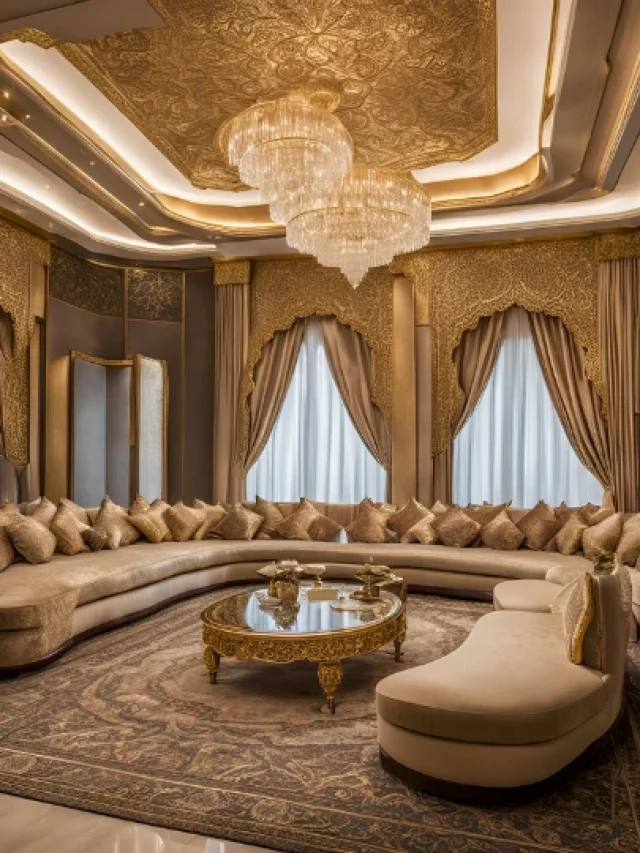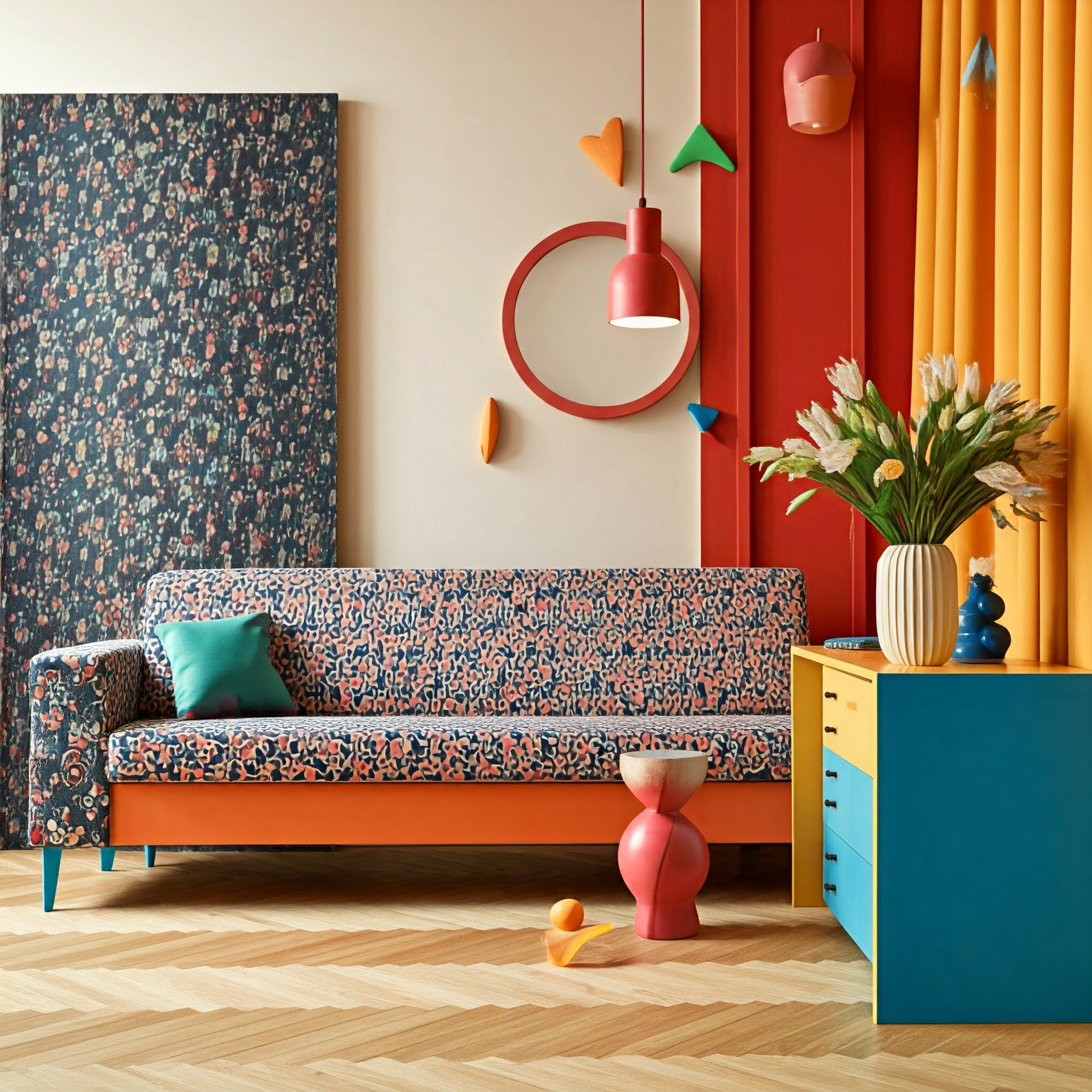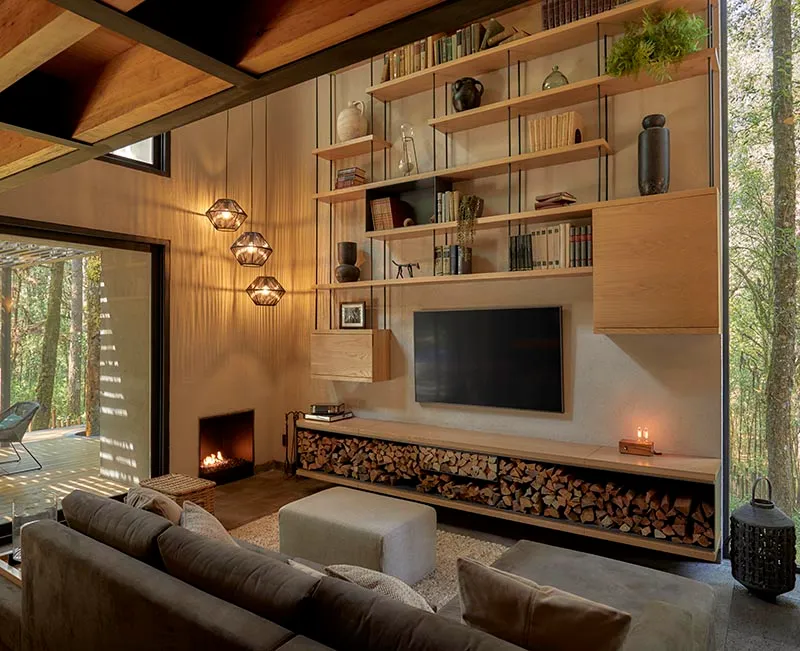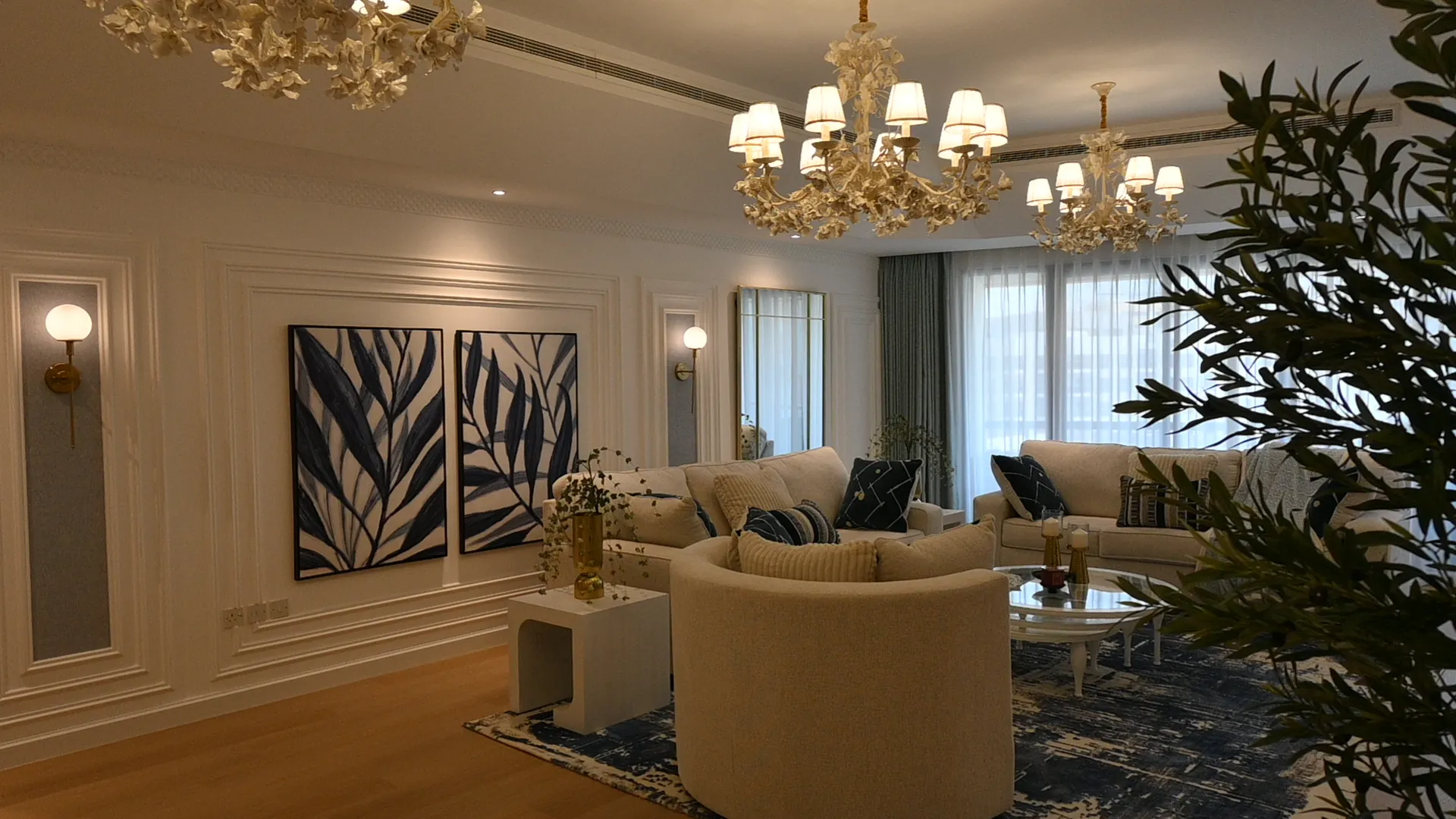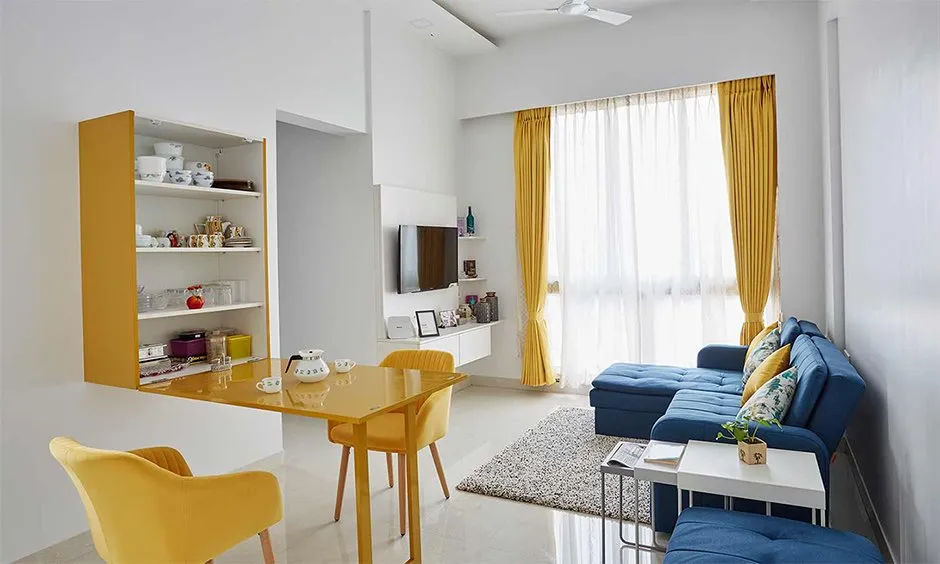What if your home could exude royal Persian elegance? Qajar-style interior design offers a stunning fusion of opulence and tradition, with intricate patterns, rich colors, and timeless details that transform any space into a regal haven. Ready to add a touch of history and grandeur to your home? Let’s start.
Firstly, Lets understand this unique style and its origin!
What is Qajar Style and its History?
During the Qajar dynasty, which governed Persia (present-day Iran) from 1781 to 1925, this fashion flourished. It was a period of significant transformations, during which Persia was embracing outside influences from Europe while remaining firmly connected to its cultural roots.
The Qajar period was characterized by lively art, culture, and architecture. The leaders of this dynasty, notably the monarchs, promoted the arts and aimed to display their authority and refinement through elaborate palaces and detailed artworks. This fusion of influences resulted in a distinctive aesthetic combining traditional Persian elements with hints of European style. Consider opulent rugs with elaborate designs, magnificent mirror mosaics that reflect light in captivating manners, and extravagant chandeliers that infused Persian environments with a touch of European sophistication.
During the Qajar period, interior design was more than just aesthetics, it was a form of expression. All aspects, including the colors selected and the placement of furniture, indicated social standing and personal style. The more wealth you had, the fancier your home’s design would be. The interiors resembled visual narratives, displaying the owner’s affluence, learning, and ties to Persian customs and the global community.
Elements in Qajar Style Interior Design
1. Layout :
Qajar-era residences and palaces were planned with an emphasis on equilibrium, unity, and incorporating nature into the living area. The design often centered on a main courtyard, acting as the focal point of the residence and impacting the house’s layout and natural light distribution.
-
Central courtyards were crucial, frequently including gardens, fountains, or pools, and served as the main focus around which rooms were organized.
-
Symmetry: Frequently, rooms and halls were arranged symmetrically, indicating a feeling of organization and equilibrium.
-
The courtyard enabled the optimal distribution of natural light, resulting in a bright and airy atmosphere in nearby rooms.
2. The wall:
The walls and ceilings within Qajar interiors were impressive works of art, frequently embellished with detailed patterns that highlighted the craftsmanship of the time. These components were not only practical but also very ornamental, playing a large role in the overall appearance.
-
Muqarnas, also known as ornamental vaulting, provided texture and depth, commonly seen in ceilings and arches.
-
Intricate Stucco Designs: Walls were frequently adorned with elaborate stucco patterns, adding texture and sophistication.
-
Ceilings often showcased Mirror Mosaics (Ayeneh-Kari) that reflected light and produced a stunning impact.
3. Flooring:
The flooring in Qajar interiors was just as decorative as the walls and ceilings, frequently adorned with opulent carpets and crafted from premium materials. Flooring options were carefully selected to enhance the luxurious environment while also providing a sense of coziness and warmth.
-
Persian carpets, with their symbolic and complex patterns, were a focal point in every room, typically showcasing floral or geometric motifs.
-
Different materials, such as stone, wood, or tile, were frequently used for floors depending on the room’s purpose and visual appeal.
-
Symbolism in Patterns: The patterns on the rugs and tiles often held cultural and symbolic meanings, adding a deeper layer of significance to the design.
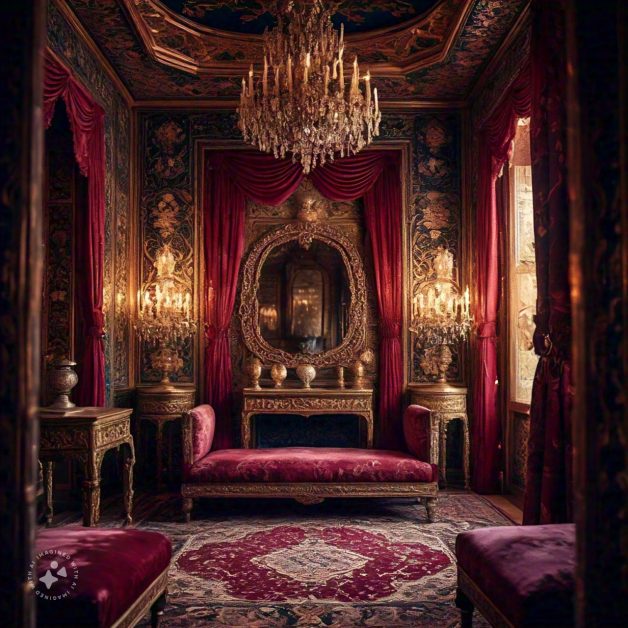
Decorative Arts and Furnishings in Qajar Style Interior Design
1. Furniture
Furniture in the Qajar period marked a blend of Persian tradition with European influences. While maintaining the cultural essence, the furniture also reflected the openness of the era to outside influences.
-
European Influence: European-style furniture began to appear, especially in the homes of the wealthy, introducing new forms and materials.
-
Traditional Divan Seating: Despite the European influence, traditional Persian seating like the divan remained a staple, arranged around the room for comfort and social interaction.
-
Combination of Styles: The coexistence of European and Persian furniture styles created a unique and eclectic interior atmosphere.
2. Decorative Elements
Decoration in Qajar interiors was all about luxury and attention to detail. Rich fabrics, intricate woodwork, and vibrant artworks filled the spaces, creating a visually rich environment that was both welcoming and opulent.
-
Lavish Textiles: Silk, velvet, and brocade were used extensively for drapes, cushions, and wall hangings, adding texture and color.
-
Intricate Doors and Windows: Often featuring stained glass and detailed carvings, these elements were both functional and decorative.
-
Art and Calligraphy: Walls were adorned with calligraphy and miniature paintings, showcasing Persian artistic traditions and adding cultural depth.
3. Lighting
Lighting in Qajar interiors was a thoughtful mix of form and function. It ranged from grand chandeliers to traditional lanterns, each chosen to enhance the ambiance and highlight the interior’s luxurious details.
-
Chandeliers and Candelabras: Often influenced by European designs, these were used in grander spaces to add a touch of opulence.
-
Traditional Persian Lamps: Smaller rooms were often illuminated by traditional Persian lamps and lanterns, providing a softer, more intimate light.
-
Functional and Decorative: Lighting was strategically placed to highlight key decorative elements and create a warm, inviting atmosphere.
Color Schemes and Motifs in Qajar Style Interior Design
1. Color Palette
The Qajar color palette was bold and vibrant, designed to create a sense of luxury and grandeur. Deep, rich colors dominated the interiors, making spaces feel warm, inviting, and sophisticated.
-
Dominant Colors: Deep reds, blues, and golds were commonly used, reflecting the richness of Persian culture.
-
Bold Contrasts: Colors were often used in strong contrasts, such as pairing deep blues with bright golds, to create visual interest.
-
Saturated Hues: The use of fully saturated colors added depth and vibrancy to the interiors, making them feel alive and dynamic.
2. Motifs and Patterns
Motifs and patterns in Qajar design were deeply symbolic, often drawing from nature and mythology. These patterns were used extensively in everything from textiles to architecture, adding layers of meaning to the design.
-
Floral Motifs: Flowers like roses and cypresses were common, symbolizing beauty and eternity.
-
Geometric Patterns: Intricate geometric designs were used to create visual harmony and reflect the mathematical precision valued in Persian art.
-
Nature and Mythology: Elements from nature and mythical creatures were often depicted, adding narrative and cultural significance to the decor.
Influence of European Styles on Qajar Interior Design
-
European Diplomatic Relations:
-
-
19th-century Persia opened up to Europe, leading to increased diplomatic ties.
-
Exposure to European art, architecture, and interior design through interactions with diplomats, traders, and travelers.
-
-
Adoption of European Styles:
-
-
Persian elite were influenced by European styles, particularly Rococo and Baroque.
-
Rococo’s ornate, playful details and Baroque’s dramatic, grand elements were especially appealing.
-
Introduction of European-style furniture, like curvy, elaborately carved chairs and tables, into Persian interiors.
-
-
Integration with Persian Aesthetics:
-
-
Persian artisans blended European motifs with traditional Persian designs.
-
This fusion created a unique aesthetic that was both distinctly Persian and influenced by European elegance.
-
-
Blending European and Persian Elements:
-
-
Persian designers didn’t just copy European styles—they adapted and blended them.
-
Example: Baroque-inspired chandeliers paired with traditional Persian carpets and mirror mosaics.
-
-
Impact of Imported Materials:
-
-
Access to imported European fabrics, wallpapers, and furniture elevated Persian interiors.
-
These materials added sophistication and modernity, enhancing the overall design quality during the Qajar era.
-
-
Creative Exchange:
-
-
The fusion of styles during the Qajar period was a hallmark of creativity, leading to rich, layered interior spaces that reflected both Persian tradition and European innovation.
-
Notable Places In Qajar Style Interior Design
-
Royal Palaces vs. Aristocratic Homes:
-
-
Royal Palaces: Places like the Golestan Palace and Niavaran Palace were the pinnacle of Qajar opulence. These palaces were massive, with grand courtyards and lavishly decorated rooms. Think high ceilings, intricate stucco work, and walls covered in mirrors and colorful tiles. Everything about these spaces screamed luxury and power.
-
Aristocratic Homes: While not as extravagant as royal palaces, the homes of Qajar aristocrats still showcased a high level of sophistication. These houses often had beautiful, though somewhat scaled-down, versions of the palace features. You’d find elaborate tile work and ornate furnishings, but on a slightly more manageable scale. The focus was still on demonstrating refinement and taste.
-
-
Gendered Spaces
Qajar homes were designed with clear distinctions between male and female areas, reflecting the social norms of the time.
-
Male vs. Female Spaces:
-
-
Men’s Quarters (Biruni): The biruni was the public side of the house, where men would entertain guests and conduct business. This area was often decorated with bold colors and elaborate designs, showcasing the owner’s wealth and sophistication. The spaces were designed to impress visitors and convey social standing.
-
Women’s Quarters (Andaruni): The andaruni, on the other hand, was more private and reserved for women and family life. It was often more subdued in its decoration, focusing on comfort and privacy. Design elements here included intricate woodwork and softer, more intimate color schemes. Women’s quarters were designed to be a serene and private retreat, away from the public eye.
-
Mix Qajar style interior design with modern interior design
Mixing Qajar style with modern design is like blending two worlds, one rich in history and tradition, the other sleek and contemporary. As an interior design enthusiast, I love the idea of taking the intricate beauty of the Qajar era and giving it a fresh twist for today’s spaces. Here’s how you can do it:
1. Start with a Bold Foundation:
Color Palette: The Qajar era is all about deep, saturated colors—think rich reds, royal blues, and golden yellows. To bring this into a modern space, start with a neutral base like white or soft gray walls, then add bold Qajar-inspired colors through accent walls, rugs, or furniture pieces. This way, you get the richness without overwhelming the room.
2. Play with Patterns:
Mix and Match Textiles: Qajar interiors are known for their intricate patterns—floral motifs, arabesques, and geometric designs. Use these in your cushions, rugs, or even wallpaper. But to keep it modern, balance these busy patterns with solid colors or simple, minimalist furniture. For example, a contemporary sofa with clean lines paired with a few patterned Qajar-style cushions can create a stunning focal point.
3. Incorporate Traditional Art in a New Way:
Wall Art: Qajar art is famous for its detailed miniature paintings and calligraphy. Instead of going full vintage, why not take these traditional elements and display them in modern frames or as part of a gallery wall? Or, if you’re feeling adventurous, create a large, abstract mural inspired by Qajar designs as a statement piece.
4. Modern Furniture with a Qajar Twist:
Furniture Choices: You don’t have to fill your space with antique pieces to achieve a Qajar vibe. Look for modern furniture that has a touch of Qajar influence like a sleek coffee table with a carved pattern or a contemporary chair upholstered in Qajar-style fabric. This way, you’re merging old and new in a way that feels cohesive.
5. Lighting that Tells a Story:
Lighting Fixtures: Lighting is key to setting the mood in any room. In the Qajar era, you’d see ornate chandeliers and lanterns. Today, you can find modern light fixtures that hint at this style—think pendant lights with geometric designs or chandeliers that mix traditional forms with contemporary materials like metal or glass.
6. Details Make the Difference:
Small Accents: Sometimes, it’s the little things that make a room special. Incorporate Qajar-style mirrors, vases, or decorative tiles in small doses throughout your space. A modern bathroom, for instance, can be transformed with a Qajar-inspired mirror and a few beautifully patterned tiles as a backsplash.
7. Create Contrasts:
Old Meets New: The magic happens when you place something traditional next to something modern. Imagine a Qajar-style ornate doorframe leading into a minimalist kitchen or a vintage Persian rug anchoring a room with modern furniture. This contrast not only highlights the beauty of both styles but also creates a dynamic, visually interesting space.
8. Embrace Symmetry with a Twist:
Balancing Elements: Qajar design often uses symmetry and balance. You can echo this in a modern way by arranging your furniture or decor symmetrically but adding in an asymmetrical twist—like a pair of matching chairs with a single, bold artwork hung off-center above them.
9. Don’t Overdo It:
Less is More: When mixing such distinct styles, it’s easy to go overboard. Remember, it’s about creating harmony, not a museum. Pick a few key Qajar elements and blend them thoughtfully into your modern space. The goal is a balanced look that feels fresh and livable, not cluttered or overly themed.
10. Personalize Your Space:
Make It Yours: Finally, don’t be afraid to infuse your personality into the design. Whether it’s a Qajar-inspired piece you’ve fallen in love with or a modern item that reflects your taste, let your space tell your story. The best interiors are those that feel uniquely you.
At Last,
The Qajar style of interior design is a fascinating blend of traditional Persian elements and European influences. Even today, the Qajar style continues to influence both historical preservation and modern design. Its legacy is seen in the meticulous restoration efforts that preserve these stunning examples of Persian architecture. Modern interior designers also draw inspiration from Qajar aesthetics, blending traditional motifs with contemporary tastes. As one of the leading interior design companies in Dubai, Euphoria Interiors blends historical charm with modern sophistication to bring your vision to life.
References for Qajar Style Interior Design:
1. https://en.wikipedia.org/wiki/Qajar_art
2. Architecture of Iran in Qajar Era June 2015, International Journal of Academic Research in Business and Social Sciences 5(5),5(5), DOI:10.6007/IJARBSS/v5-i5/1638
Disclaimer
The historical content provided here is for informational purposes only and should not be considered as expert historical analysis. While we aim to offer accurate and insightful information, we are not professional historians. We are interior designers based in Dubai, and our expertise lies in creating beautiful and functional spaces inspired by various design styles, including historical ones.
FAQs
-
What is the style of Qajar painting?
Detailed portraiture, vibrant colors, and a blend of Persian tradition with European realism characterize qajar painting. -
What were the beauty standards in the Qajar era?
Beauty standards in the Qajar era emphasized large eyes, thick eyebrows, long mustaches for men, and fuller figures as symbols of health and fertility. -
What is the Qajar architecture in Iran?
Qajar architecture in Iran features grand palaces, ornate facades, colorful tile work, intricate stucco, and mirror mosaics, blending Persian and European styles. -
What is the Qajar dynasty known for?
The Qajar dynasty is known for its cultural renaissance, particularly in art, architecture, and the introduction of modern influences into traditional Persian culture.
